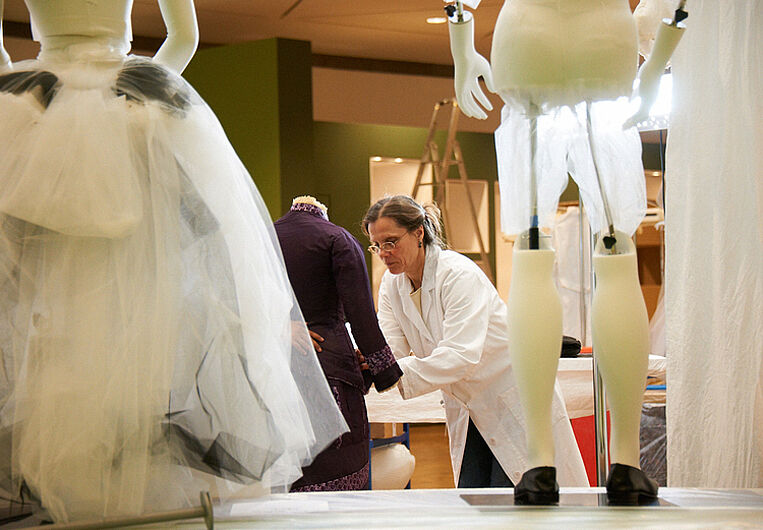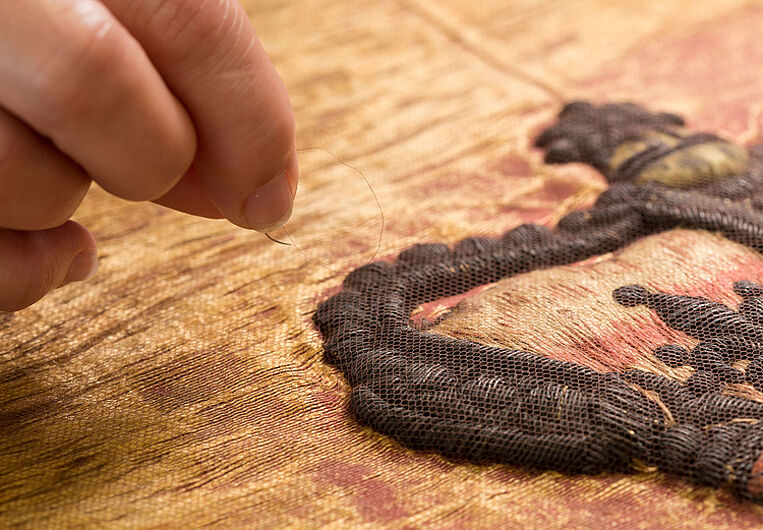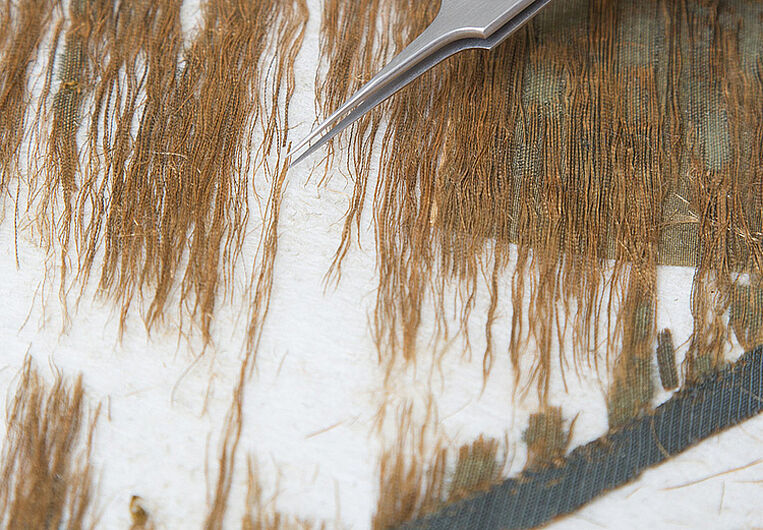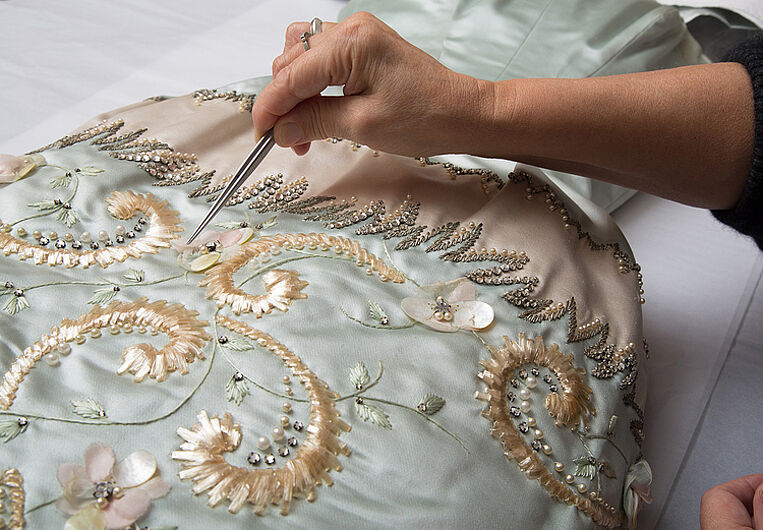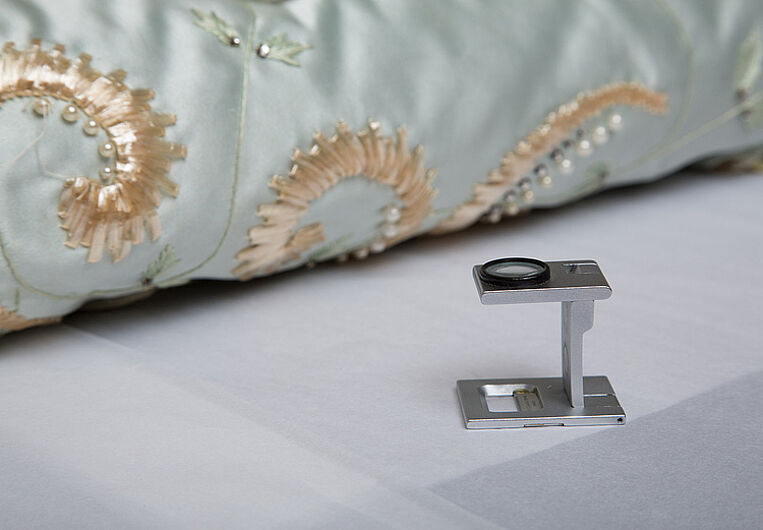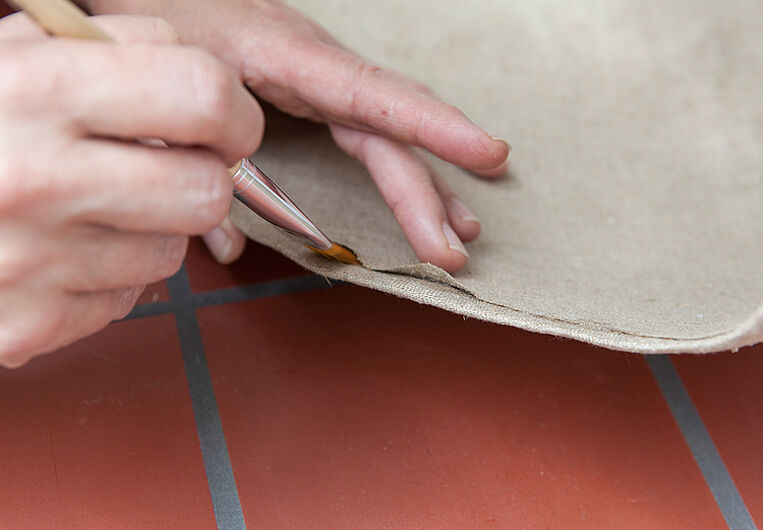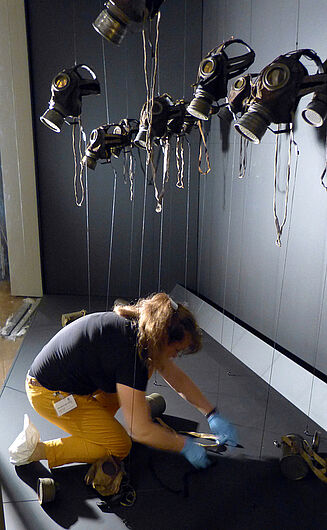Textile Conservation
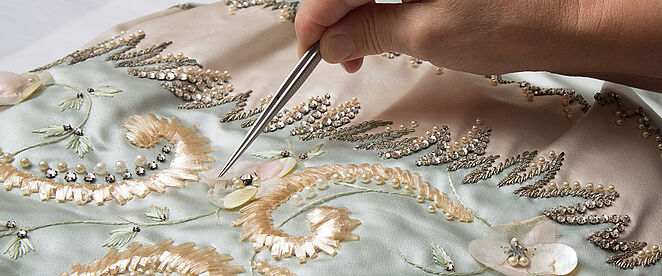
The Department of Textile Conservation takes care of the entire textile collection of the DHM as well as the textile components on objects found in other departments. This category includes uniforms, flags, items of everyday use in the areas of civilian clothing and accessories (in the widest use of the term), work clothes, religious and political textiles like flags and banners, household textiles, textiles on toys, everyday objects and special inventory items.
The textile objects receive continual maintenance. They are prepared through conservation and/or restoration treatments before the objects are exhibited or go on loan outside of the museum. For exhibitions in the museum, they are exhibited on custom-made-to-measure supports.
The biggest challenge in textile collections lies in their diversity of material types and sizes. Historical textiles are found in combination with nearly all other materials and require a close working relationship with conservators in other departments. Modern materials like artificial fibres and plastic surface finishes introduce new conservation problems.
The 3-dimensional qualities of many objects like clothing, accessories, and garniture are an additional challenge – for storage as well as presentation in an exhibition.
A further challenge is the contamination of many textile objects with various biocides. The control of eating insects is a historical problem so over hundreds of years different methods of control have been carried out. The result is that various biocides have accumulated on objects, which are also proven to be dangerous to human health. In these cases, the conservators must wear protective clothing and employ precautionary measures when in direct contact with these items.
